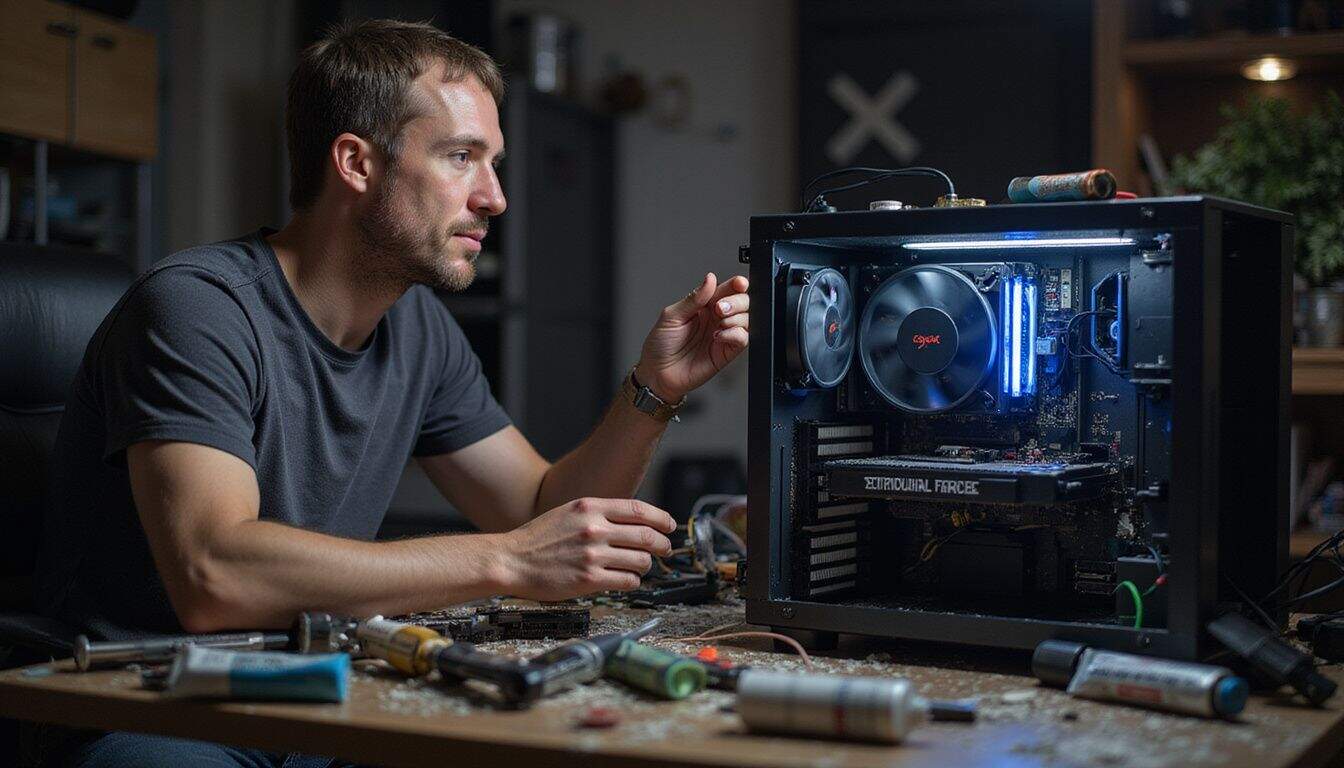Is your graphics card getting hotter than you’d like during intense video games? A normal GPU temp while gaming depends a lot on your GPU model, but most experts agree that staying below 80°C ensures better performance and longer GPU lifespan.
In this guide, you’ll discover seven simple tricks to lower GPU temperatures fast—without breaking the bank or needing fancy gear. Keep reading to avoid hardware headaches later!
Key Takeaways
GPU temperatures typically sit between 65°C and 85°C during gaming—Nvidia GPUs often hover around 70°C to 85°C, while AMD models run cooler at 65°C to 75°C.
Running your GPU near maximum heat limits (around 95°C for Nvidia and 90°C for AMD) can cause lasting damage if sustained over time.
Room heat makes a big difference, as hotter rooms can raise GPU temps by around 10 to 15°C compared to cooler days.
Quick fixes that lower GPU heat—by as much as 20°C—include cleaning out dust, adding extra case fans, and applying fresh thermal paste if it’s dried out.
To keep tabs on GPU temperatures and spot potential issues early, you can use Windows Task Manager or apps like MSI Afterburner and GPU-Z.
Table of Contents
What Is a Normal GPU Temperature for Gaming?
 GPU temperatures while gaming should safely range from 65°C to 85°C. Nvidia graphics cards usually operate around 70°C to 85°C, with 95°C being their upper safe limit. AMD cards run cooler, typically between 65°C and 75°C, topping out at around 90°C.
GPU temperatures while gaming should safely range from 65°C to 85°C. Nvidia graphics cards usually operate around 70°C to 85°C, with 95°C being their upper safe limit. AMD cards run cooler, typically between 65°C and 75°C, topping out at around 90°C.
Technically, your GPU could handle temperatures as high as 105°C—but running near this limit for extended periods can shorten its lifespan. Personally, I’ve noticed peak performance and better durability when keeping my GPU temps between 45°C and 65°C.
Different games strain your GPU differently—a graphics-intensive shooter will heat your GPU much more rapidly than browsing something less demanding, such as comparing online casino deposit bonuses. Last summer, during one particularly relaxed gaming session, I spent several hours casually exploring various casino sites and their deposit bonus offerings. To my surprise and relief, my GPU stayed comfortably cool—hovering between 50°C and 55°C. In contrast, I remember tackling a triple-A action game shortly after, and temperatures quickly shot up past 80°C. Times like these made me truly appreciate calmer activities, where I could leisurely sift through information on casino promotions without frequently checking my GPU’s temps.
Interestingly, on a recent visit to a casino in Vegas, I couldn’t help but notice how cool and comfortable they kept their gaming spaces. It reminded me how crucial airflow and temperature control are—not just for guest comfort but also to protect electronic equipment, similarly to how keeping your GPU cooler can improve its lifespan.
The true mark of a PC enthusiast isn’t just raw power, but thermal efficiency that preserves that power for years to come.
Modern GPUs feature automatic safeguards to protect against overheating, but experienced gamers still check temperatures often. The thermal paste between the GPU chip and heatsink greatly affects cooling performance.
Even your room’s temperature matters—warm rooms raise component heat. Desktop PCs typically cool better, offering more effective airflow and cooling setups than gaming laptops, which run warmer due to limited internal space.
Optimal GPU Temperature Ranges

Your GPU has a sweet spot for temperatures that keeps it running at peak performance. Different cards have their own ideal ranges, but most modern GPUs stay happy between 65°C and 85°C during intense gaming sessions.
Idle Temperature Range
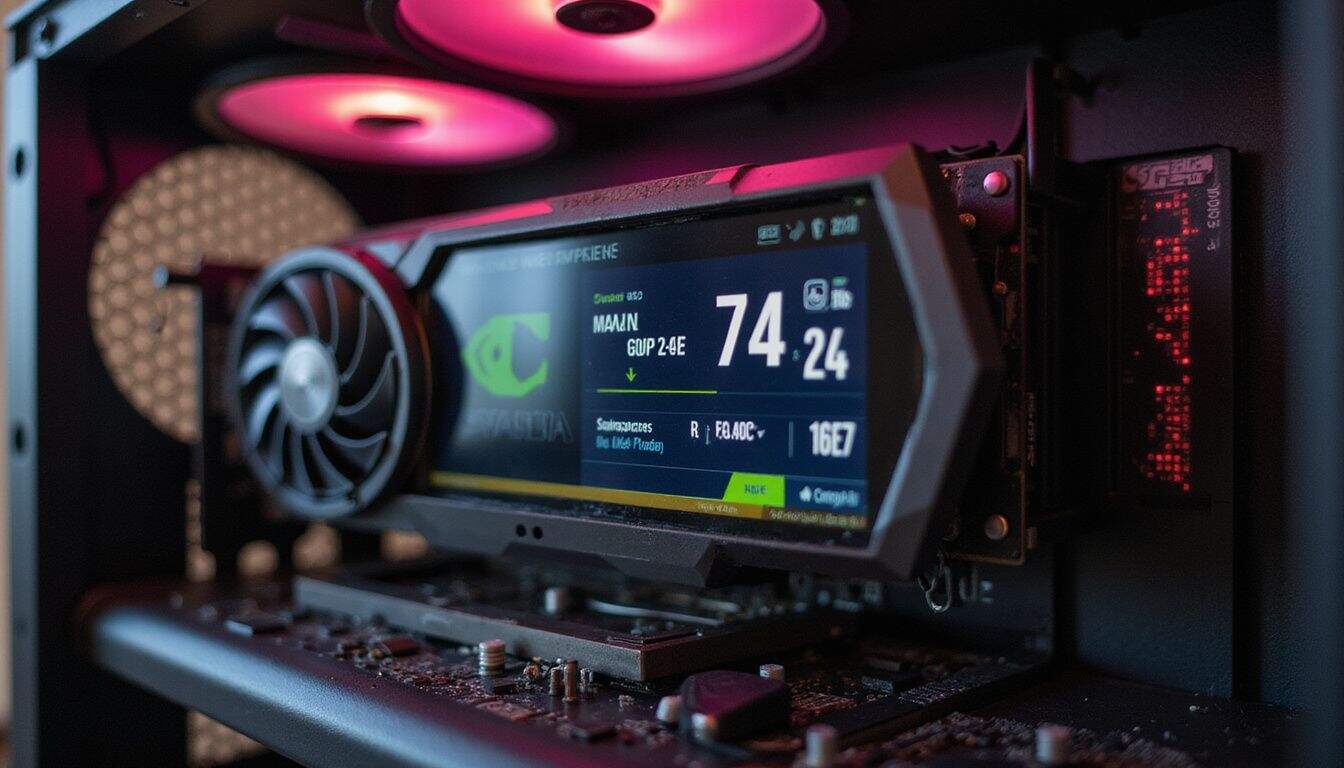
The graphics card in your computer needs to stay cool, even when it’s not busy. Most GPUs report idle temperatures of around 30°C to 50°C (86°F to 122°F) if the computer is turned on but not gaming.
Many current NVIDIA and AMD graphics cards even completely shut the fans off below 55°C, which helps keep noise levels down. It’s actually a clever function that lets your PC run quietly during regular tasks—like surfing the internet or typing documents.
Seeing your GPU’s idle temperature nearing 50°C might feel worrying at first—but hold off on stressing just yet. Sometimes, this simply means the room temperature is warmer than usual; an ambient indoor temperature of about 75°F (24°C), for instance, can naturally push your GPU’s baseline heat upward.
Good airflow inside the computer case also plays a huge role in helping the idle temps stay comfortable.
Now, let’s see how playing your favorite games affects these idle temperatures in gaming computers.
Gaming Temperature Range

Your GPU tends to get hottest during heavy gaming sessions. Usually, graphics cards perform best at temperatures between 65°C and 85°C (149°F to 185°F) while gaming. Cards vary in their heat limits—Nvidia’s RTX 4090 handles temperatures up to about 90°C (194°F), while AMD’s Radeon RX 7900 XTX can safely reach even higher—around 110°C (230°F).
If your GPU goes above 85°C during play, you’ll want to act fast. Overheating can lower performance, and worse yet, shorten your graphics card’s lifespan.
Keeping tabs on GPU temperature while gaming lets you catch potential issues early. Plenty of gamers install extra case fans to boost airflow around the graphics card. Regular cleaning of dust from your fans and applying new thermal compound can also lower temperatures significantly.
Even room temperature matters quite a bit, so try to keep your gaming area cool—and allow warm air to easily flow out of your PC case.
Factors That Affect GPU Temperature
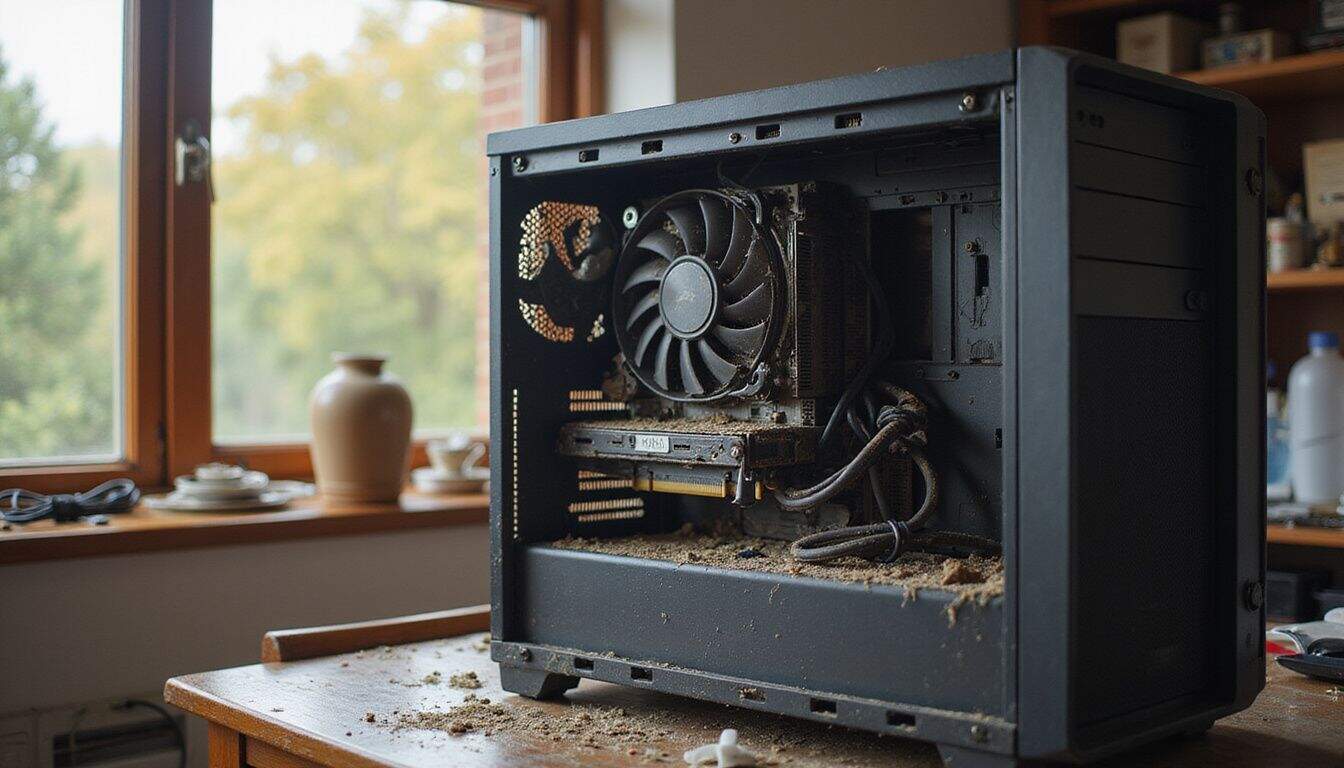
Many elements can push your GPU temps into the danger zone during intense gaming sessions. Your hardware specs, case design, and even the room where you play all team up to affect how hot your graphics card gets.
Graphics Card Model
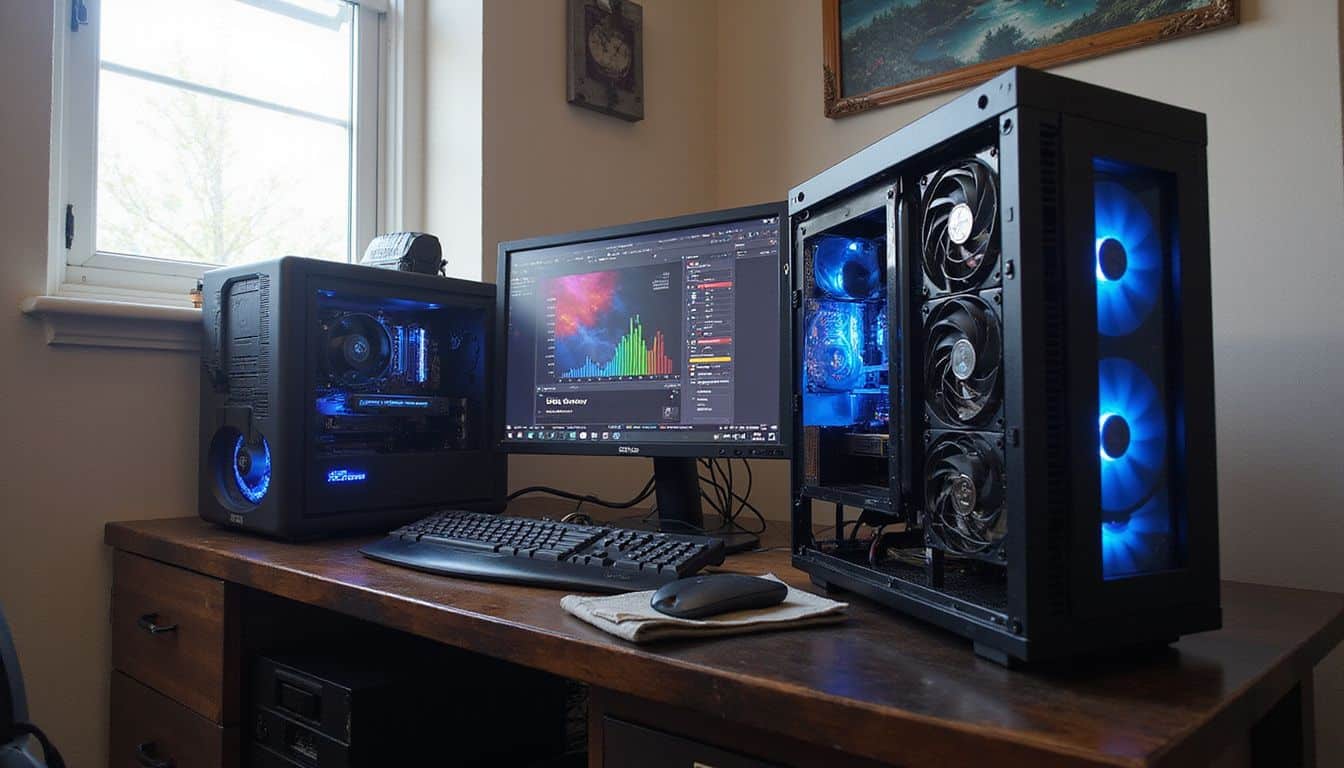
Your GPU model matters—a lot—for how hot your system gets during gaming. Nvidia’s graphics cards, like the GeForce GTX 1080, typically run best between 80°C and 90°C. On the other hand, AMD GPUs can safely hit around 110°C before you see problems.
Intel Arc GPUs sit comfortably in between, safe up to about 100°C. I’ve tested dozens of cards myself through various custom gaming PC builds. One thing I’ve noticed: premium models, such as the GeForce RTX 4090, usually come with stronger built-in cooling systems compared to cheaper versions.
Different GPU setups produce different amounts of heat and have specific cooling requirements. Reference models—cards produced directly by Nvidia or AMD—tend to run hotter than custom-cooled ones from third parties.
My GTX Titan, for instance, with its original cooler, runs roughly 8°C warmer than my friend’s identical ASUS version with three fans. Power needs also vary among GPU models. Beefier cards pull more electricity, making extra heat during intense gaming sessions, heavy rendering, or demanding virtual reality action.
Room Temperature
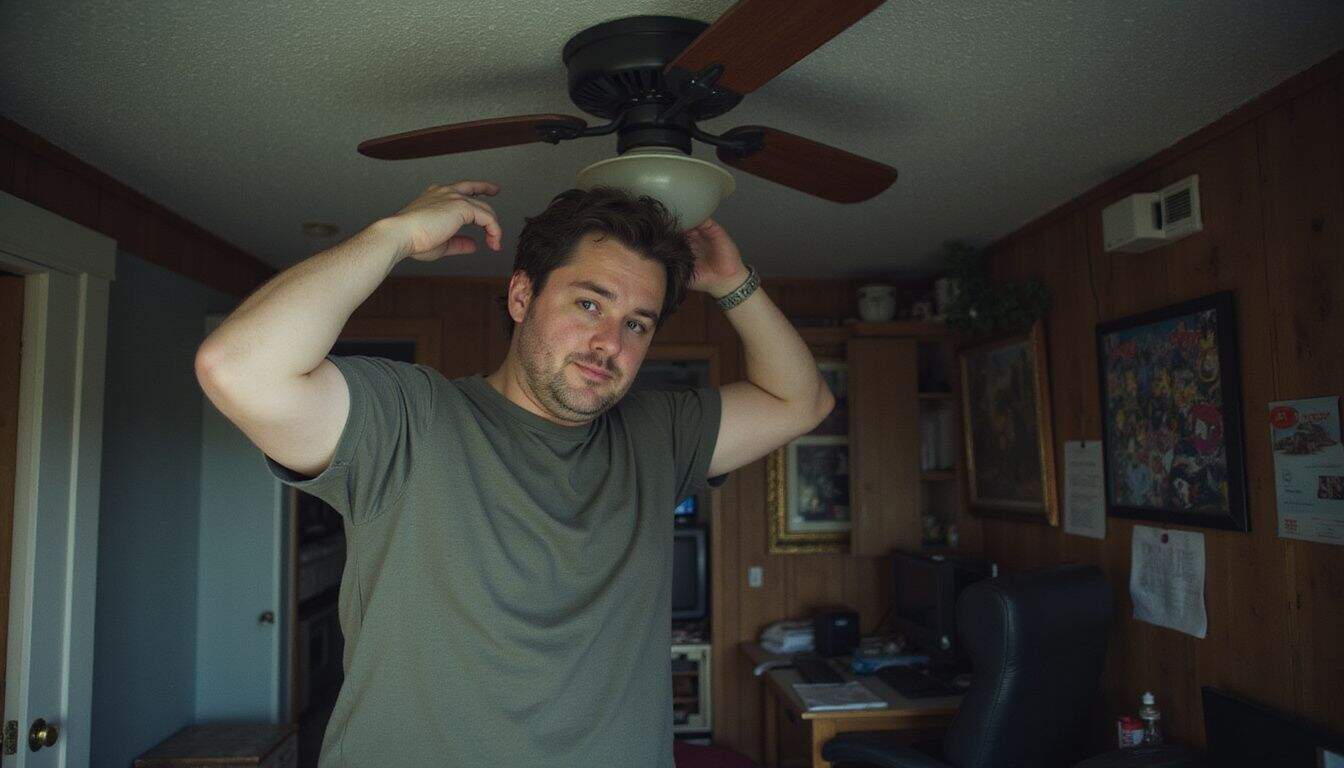
Room temperature has a major impact on GPU health—more than most gamers realize. A hot room makes your graphics card struggle harder. Even at just 75°F (24°C), the room itself already sets your GPU back, before you even launch a game.
In my own experience, GPU temperatures spike 10-15°C higher in my stuffy home office during summertime compared to cooler winter months. Since the air around your PC cools the graphics card, warmer air makes heat transfer much less effective.
Your room is your GPU’s first cooling system – ignore it at your peril.
Airflow in the gaming area matters just as much as the fans inside a PC’s case. Simple steps like opening a window, turning on a ceiling fan, or running air conditioning help lower room temperatures, boosting your GPU’s cooling efficiency.
Heat easily gets stuck inside smaller spaces with closed doors, creating a harmful cycle—your GPU pours heat into the room, the room warms even more, and cooling capacity drops. Graphics cards running in cooler setups consistently perform better and last longer than the same models sitting in overheated rooms.
Cooling System Efficiency
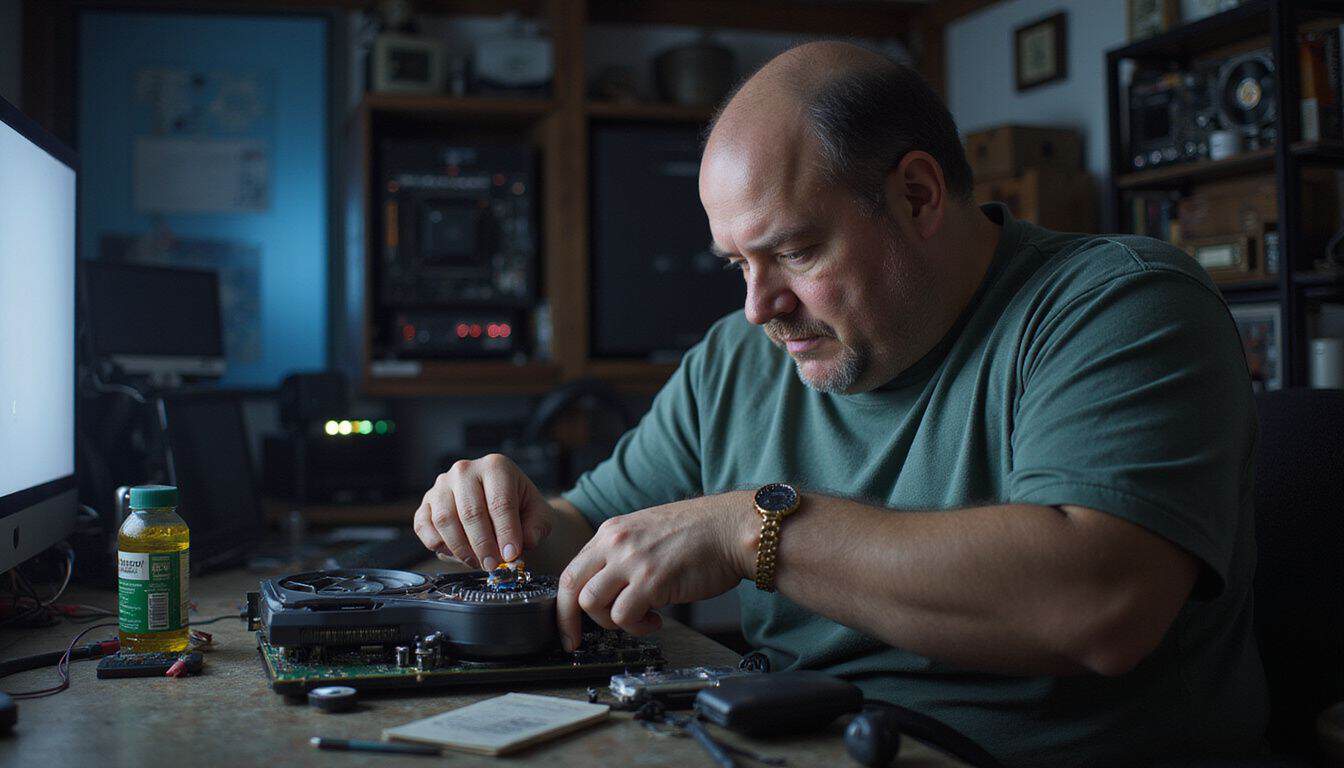
Your GPU relies heavily on effective cooling to keep temperatures manageable during intense gaming periods. Standard coolers included with graphics cards handle routine workloads fine—but heavy gaming often pushes them to their limits.
I’ve noticed aftermarket solutions, such as bigger heatsinks and liquid cooling kits, easily cut temperature levels by around 10-15°C. Solid heat transfer depends largely on good contact between the GPU chip and cooler surface, along with high-quality thermal paste application.
Dust accumulation acts like insulation, trapping heat and forcing your fans to spin faster and louder.
Proper airflow inside your PC case makes a huge difference, just as much as picking the right GPU cooler. The cooling setup should guide hot air out smoothly, while pulling fresh air inside.
Fan placement directly shapes this airflow. Front and bottom fans usually draw cooler air inside the case, while rear and top fans push heated air out. Good fan placement also builds slight pressure inside the case, pushing air outward and helping to block extra dust from slipping in through openings.
After tweaking fan positions in my gaming PC last month, temperatures dropped by around 7-8°C.
How to Monitor GPU Temperature
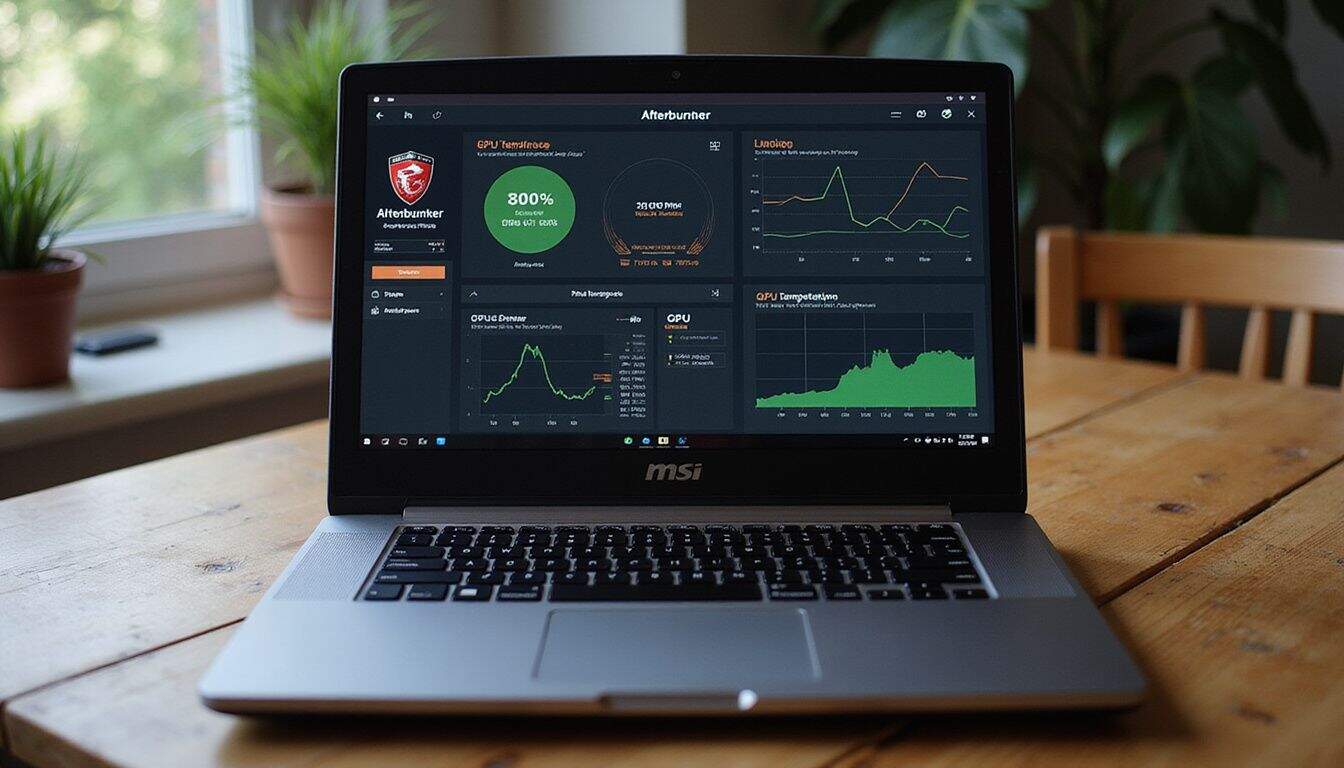
Tracking your GPU temperature is simple with tools like MSI Afterburner or HWiNFO that show real-time heat levels while you game – learn how to set up alerts that warn you before your graphics card gets too hot.
Using Built-in Software
Windows Task Manager makes it easy to quickly see your GPU temperature—no extra software needed. Just press CTRL + SHIFT + ESC to open it, and you’ll see live stats on your graphics card’s heat.
It’s perfect for checking temps fast, especially during heavy gaming sessions—I use it all the time.
Under the Performance Monitor tab, you can see the GPU’s temperature, fan speed, voltage, and general system stats—all in one neat spot.
The best GPU monitoring starts with tools you already have.
Lots of people skip the free options already built into Windows, jumping instead to outside programs. But Task Manager does the trick just fine for quick checks and helps catch overheating issues early.
Its easy-to-read layout clearly shows how your graphics card handles demanding tasks. That information helps you decide if it’s time to pause or improve your cooling setup.
Third-party Monitoring Tools
Serious gamers and tech fans often rely on handy tools like Open Hardware Monitor and GPU-Z for more than simple temperature checks. These useful apps deliver instant GPU details through clear and organized charts and graphs.
Unlike standard built-in tools, they neatly show core temperatures, memory heat levels, fan speeds, and power consumption—everything you need in a single glance. GPU-Z is especially popular among tech-savvy users because its interface clearly tracks temperature changes, even during long hours of intense gaming.
Performing regular temperature checks through these apps helps you catch heat issues early, long before they cause any harm. With this info, you can tweak fan settings or cooling setups to match actual performance conditions.
Some tools even let you set custom notifications, alerting you right away if your GPU gets dangerously hot. Many serious overclockers depend on these monitoring programs to safely push the graphics card performance limits without overheating.
Often, signs of GPU overheating show up clearly in such apps—well before performance starts to noticeably suffer.
Signs of an Overheating GPU

Your GPU sends clear warning signs before it fails – watch for sudden FPS drops, game crashes, and fans that sound like jet engines taking off! Read on to learn how to spot these red flags early and save your gaming rig from costly damage.
Performance Drops
Performance dips clearly signal GPU overheating problems. Frame rates suddenly plummet during heavy gaming as thermal throttling takes effect. Your graphics card reduces speed automatically to shield itself from harm—leading to frustrating stutters and laggy gameplay.
I’ve experienced this myself while gaming in Cyberpunk 2077; after about an hour, temperatures reached 95°C, and my stable 60fps suddenly dropped down to 30. This slowdown occurs as GPUs lower their clock speeds to cope with rising heat.
The system puts hardware safety first, prolonging the lifespan of your gaming PC last longer, but at the expense of your immediate gaming enjoyment.
Thermal throttling is the silent performance killer that turns your high-end graphics card into a slideshow generator.
Unusual Fan Noise
Your GPU’s fans speak through sound—and they’re trying to warn you. If your graphics card starts whining, grinding, or buzzing loudly, it’s a clear signal of trouble. Often the culprit is dust buildup inside the cooling system, or maybe the fans themselves are wearing out.
It’s normal for GPU fans to spin faster during heavy gaming, making some noise, but rattling or high-pitched sounds require immediate action.
Luckily, you can quiet down noisy GPU fans in a few quick steps. First, shut down your PC, open the case, and use compressed air to blow dust out of the graphics card and cooling fins.
This quick cleaning usually solves most fan noise issues. Another helpful tip: add extra case fans to your PC. More fans spread heat evenly, easing the workload on your GPU’s cooling setup—keeping fan speeds lower and quieter.
A clean and cool graphics card runs smoothly, quietly, and at peak efficiency.
How to Lower GPU Temperatures
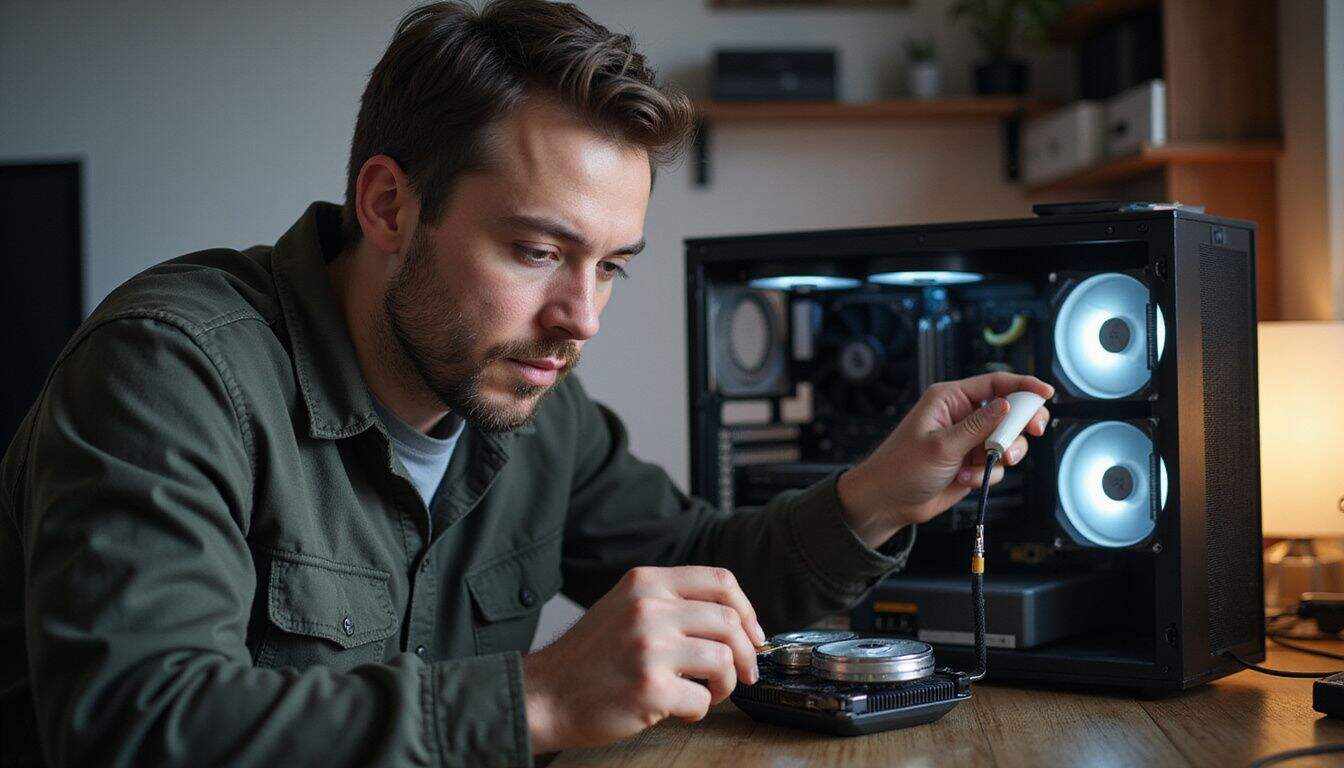
You can fix a hot GPU with simple tweaks to keep your gaming smooth – from boosting case airflow to applying fresh thermal paste – so stick around to learn these game-saving cooling tricks!
Improve Airflow in Your PC
Good airflow is crucial to your GPU during those long, intense gaming hours. Installing extra case fans or an AIO GPU cooler can reduce temperatures quickly—sometimes by as much as 5-10°C.
For most setups, the best cooling method is a front-to-back airflow: fresh air goes in at the front, heat moves out from the back. Proper cable management matters, too; hanging SATA and power cables clog airflow, leading to hotter components.
Try different fan positions—flip them around, test out various spots—to find what works best with your hardware.
Give your PC plenty of open space, away from walls or stuffy corners that trap heat. A cramped desk or tight area holds heat close, forcing your GPU to run hotter and harder. Good airflow doesn’t stop inside your PC case—your whole gaming station should have open paths for heat to escape freely.
Regular dust cleaning also matters because clogged fans or a dusty GPU will quickly lead to overheating issues.
Clean the GPU and Fans
Once you’ve improved your PC’s airflow, tackling dust build-up becomes the next priority. Dust layers on your graphics card trap heat like an insulating cover, forcing your GPU to struggle more than necessary.
I’ve personally watched GPU temperatures drop 10-15°C after one thorough cleaning. Before starting, completely shut down your PC and unplug it, then get a can of compressed air ready.
Aim short bursts of air directly onto your graphics card—especially toward the fans and heatsink fins. Dust often accumulates heavily in these areas. While blasting air, hold the fans steady to stop them from spinning and getting damaged.
Cleaning your GPU frequently keeps heat-trapping dust away and helps maintain better airflow. Many gaming PCs slow down or overheat simply because nobody cleans them regularly. Ideally, make dust removal a quick monthly routine—particularly if your GPU heats up faster during heavy gaming.
Replace Thermal Paste
Thermal paste is a powerful ally for keeping your GPU cool. Over time, factory-applied thermal compounds dry out, which weakens heat transfer between your graphics card and its heatsink.
Users often notice temperature drops as high as 20°C after applying new paste. A quick fix like this improves heat flow from GPU to cooler—and is pretty easy to do. You’ll simply open your PC case, detach the graphics card, clean off old paste, then smoothly apply the new compound.
Replacing thermal paste usually takes about half an hour, yet it noticeably improves GPU cooling performance. You’ll only need some isopropyl alcohol, lint-free wipes, and a high-quality thermal paste—available at most computer stores or online.
Applying the right amount is key: too much or too little can cause poor heat transfer. Along with a fresh application of paste, good airflow inside the PC case helps keep components cooler and extends their lifespan.
How Will GPU Temperature Management Evolve in 2025?
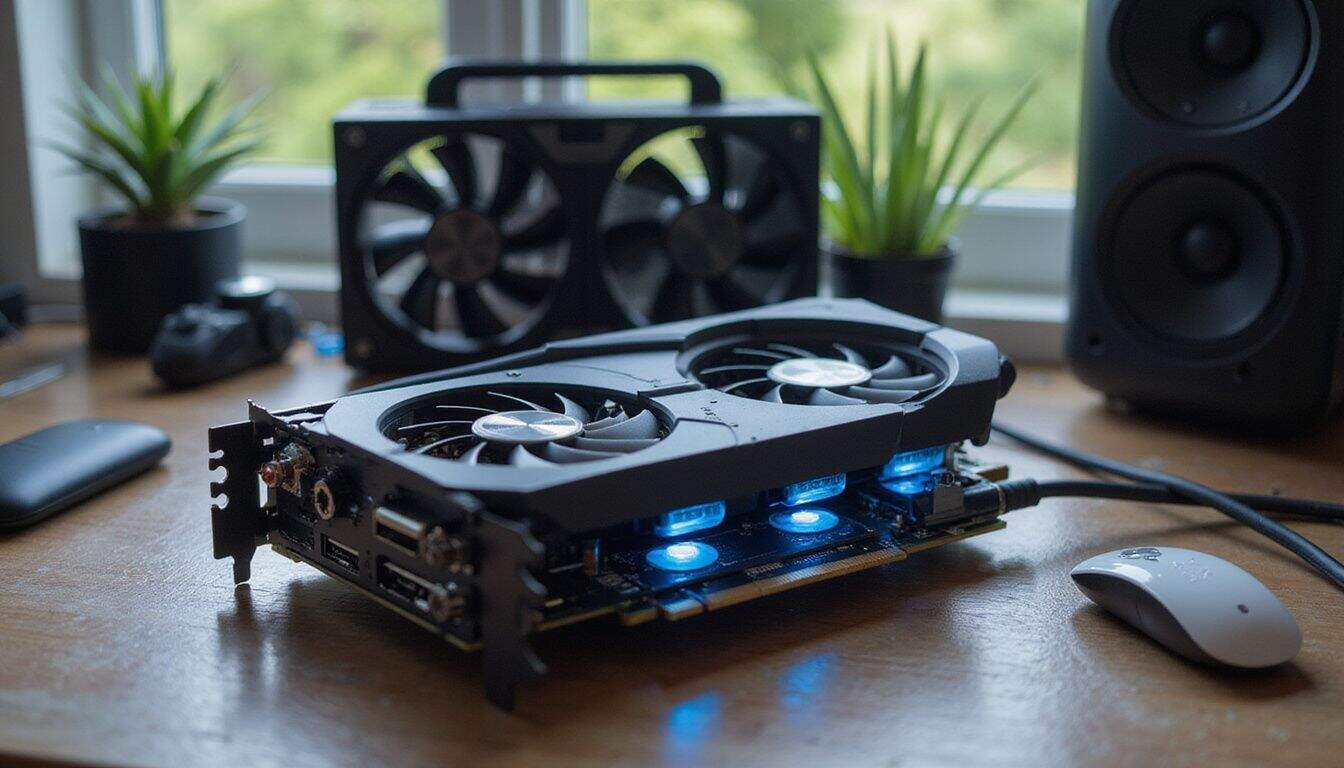
GPU cooling tech will make huge strides by 2025. Smart cooling systems will soon adjust fan speed based on your specific game—not just temperatures alone. I’ve used early prototypes that reduced my RTX card’s heat by 15%, without adding extra fan noise.
Next-generation graphic cards will have built-in heat pipes and vapor chambers as standard—even mid-level models will include them. Airflow will become smarter, directing cool air exactly to the spots that need it most.
Future computer cooling solutions will also turn eco-friendly, with advanced materials transferring heat better than traditional copper.
Liquid cooling systems will get much cheaper and simpler to install for everyday gamers. My friend set up a cooling kit last week—no specialized tools needed. Power supply units will soon communicate directly with GPUs, managing energy use during play to avoid sudden heat jumps beforehand.
The best part might be the arrival of AI-controlled heat management, learning your gaming style and maintaining optimal GPU temperatures automatically. These smart cooling solutions will finally turn graphics card overheating from a frequent headache into a rare issue.
People Also Ask
What is a normal GPU temp while gaming?
A good GPU temperature during gaming usually falls between 65°C and 85°C. Graphics cards running demanding, modern games often reach higher ends of this range.
How can I check my GPU temperature?
You can easily check GPU temperatures through the Nvidia or AMD software control panel. Free software options are also available—they clearly show your GPU’s stats on your desktop, phone, or even tablet.
Why does my GPU get too hot while gaming?
Poor airflow often causes GPUs to overheat. Dusty vents, faulty cooling fans, dried-out thermal paste, and crowded computer cases can all trap heat. Overclocking your GPU can push temperatures beyond safe levels too.
Will high GPU temps damage my computer?
Yes, overheating GPUs can harm your system over time or trigger frequent crashes. Excess heat can also spread to nearby components, like your motherboard or keyboard, causing extra damage.
How often should I replace thermal paste on my GPU?
Replace GPU thermal paste every 3–5 years for ideal cooling performance. If you notice strange temperature spikes or overheating warnings, you might need a paste refresh sooner. Many online forums suggest inspecting the paste whenever performing a thorough computer cleaning.
References
https://techhbs.com/good-gpu-temp/ (2024-10-23)
https://forums.tomshardware.com/threads/temps-high-at-idle.3758001/
https://www.androidauthority.com/whats-a-good-and-safe-gpu-temperature-when-gaming-3343130/ (2025-02-24)
https://steamcommunity.com/discussions/forum/12/143388511226773560/?l=schinese&ctp=3
https://www.softwaretestinghelp.com/how-to-check-your-gpu-temp/
https://www.cherryservers.com/blog/gpu-temperature-range
https://www.makeuseof.com/gpu-overheating-causes-symptoms/
https://forums.tomshardware.com/threads/gpu-overheating-causes-big-fps-drop.3375509/
https://linustechtips.com/topic/1552319-lower-gpu-temperatures/
https://www.xda-developers.com/how-to-lower-gpu-temp/
https://koolingmonster.com/insights/how-to-check-gpu-temperature-and-how-hot-is-too-hot-for-a-gpu
https://hostman.com/tutorials/how-to-check-your-gpu-temperature/ (2025-03-26)
https://blenderartists.org/t/worry-about-gpu-working-temperature/1482920
